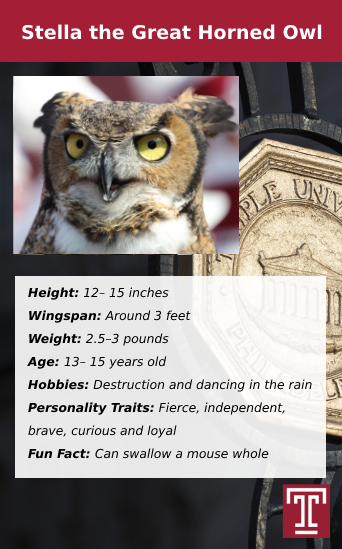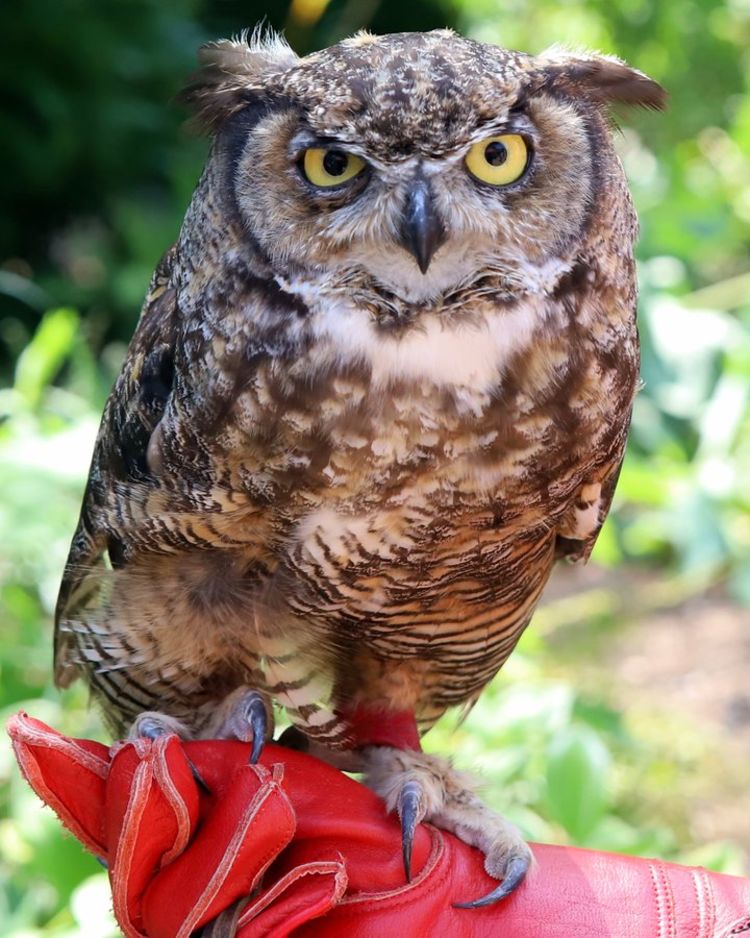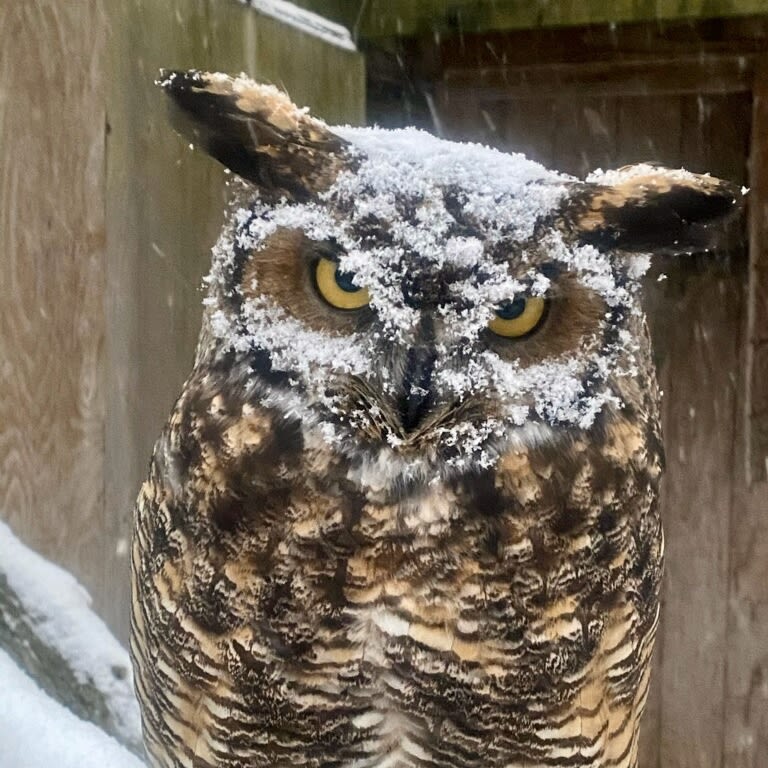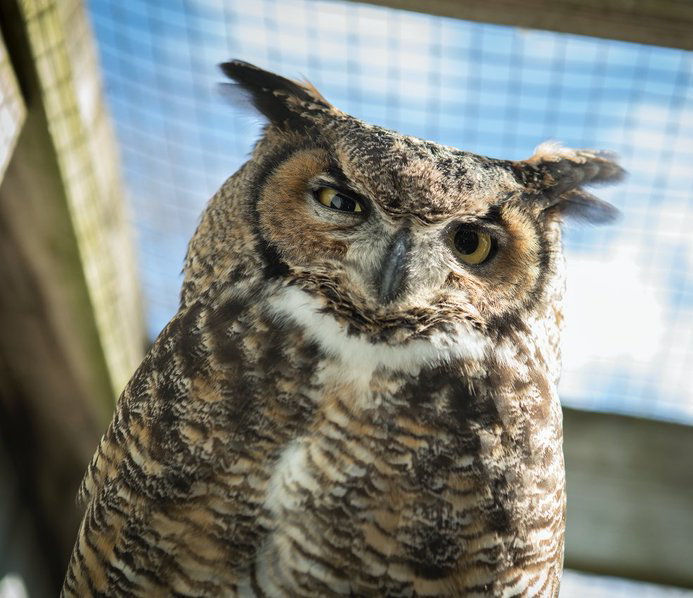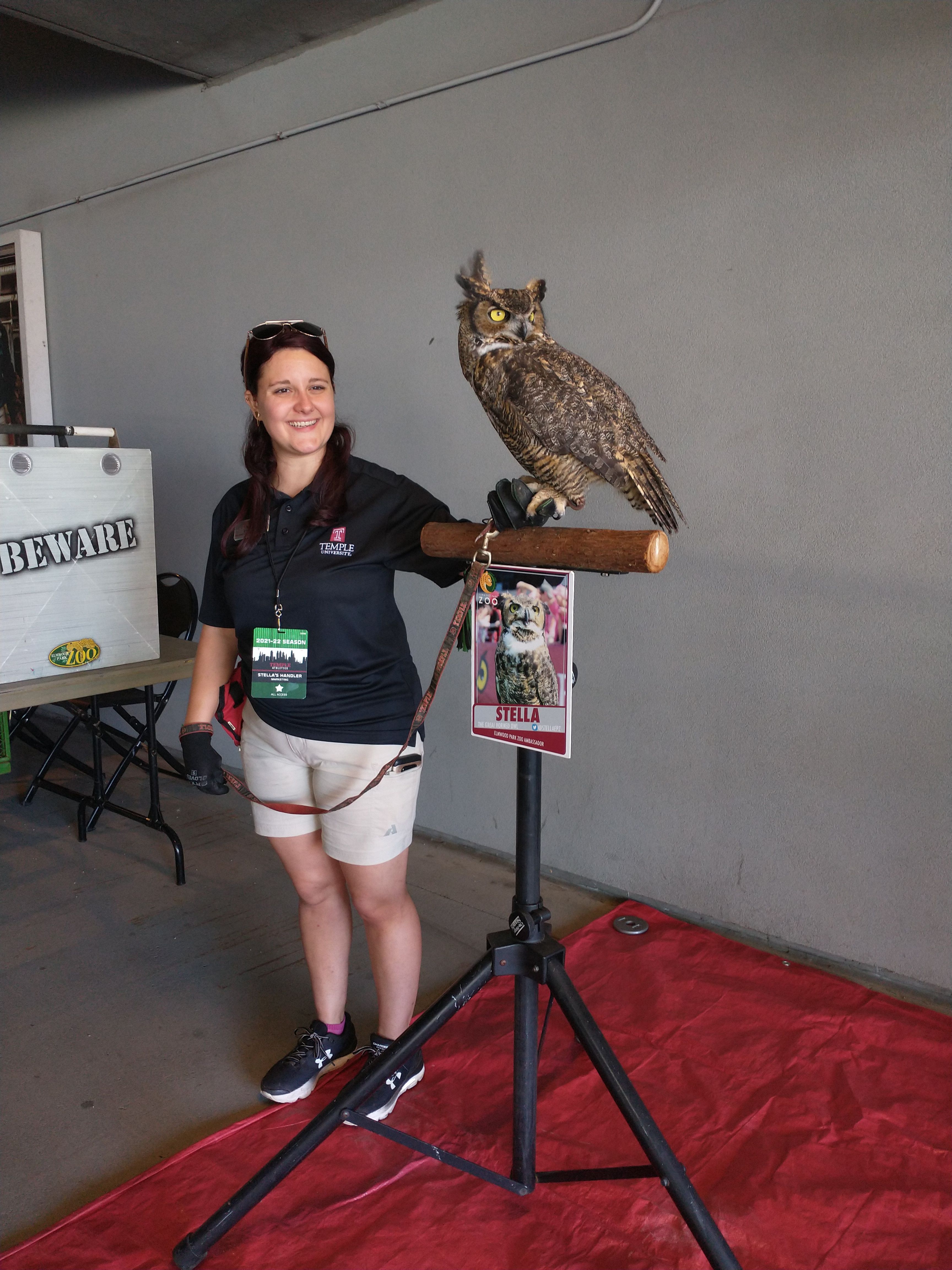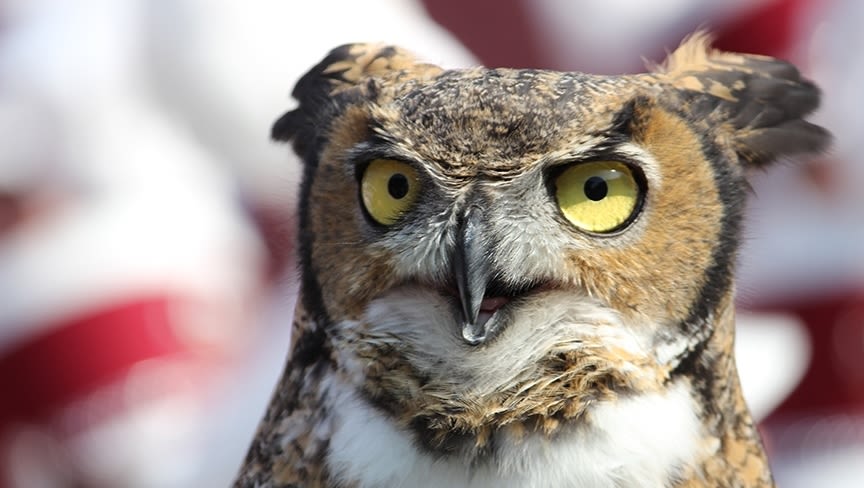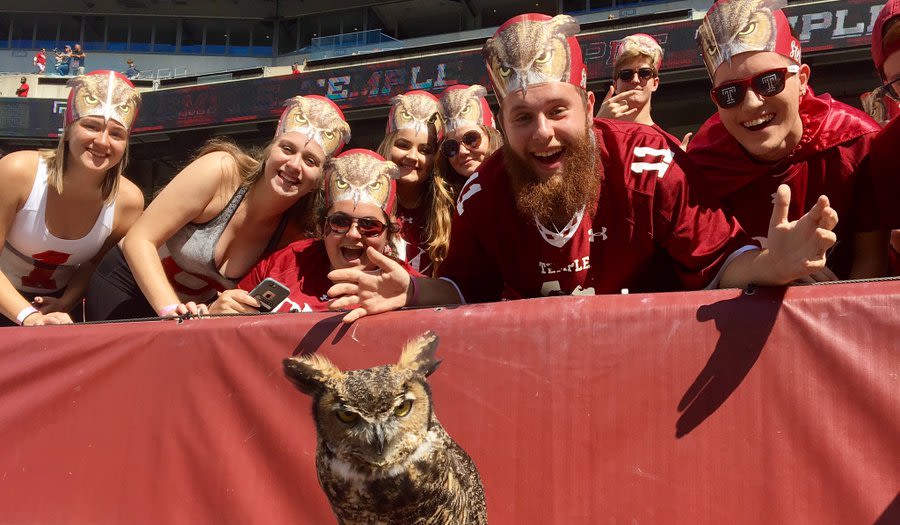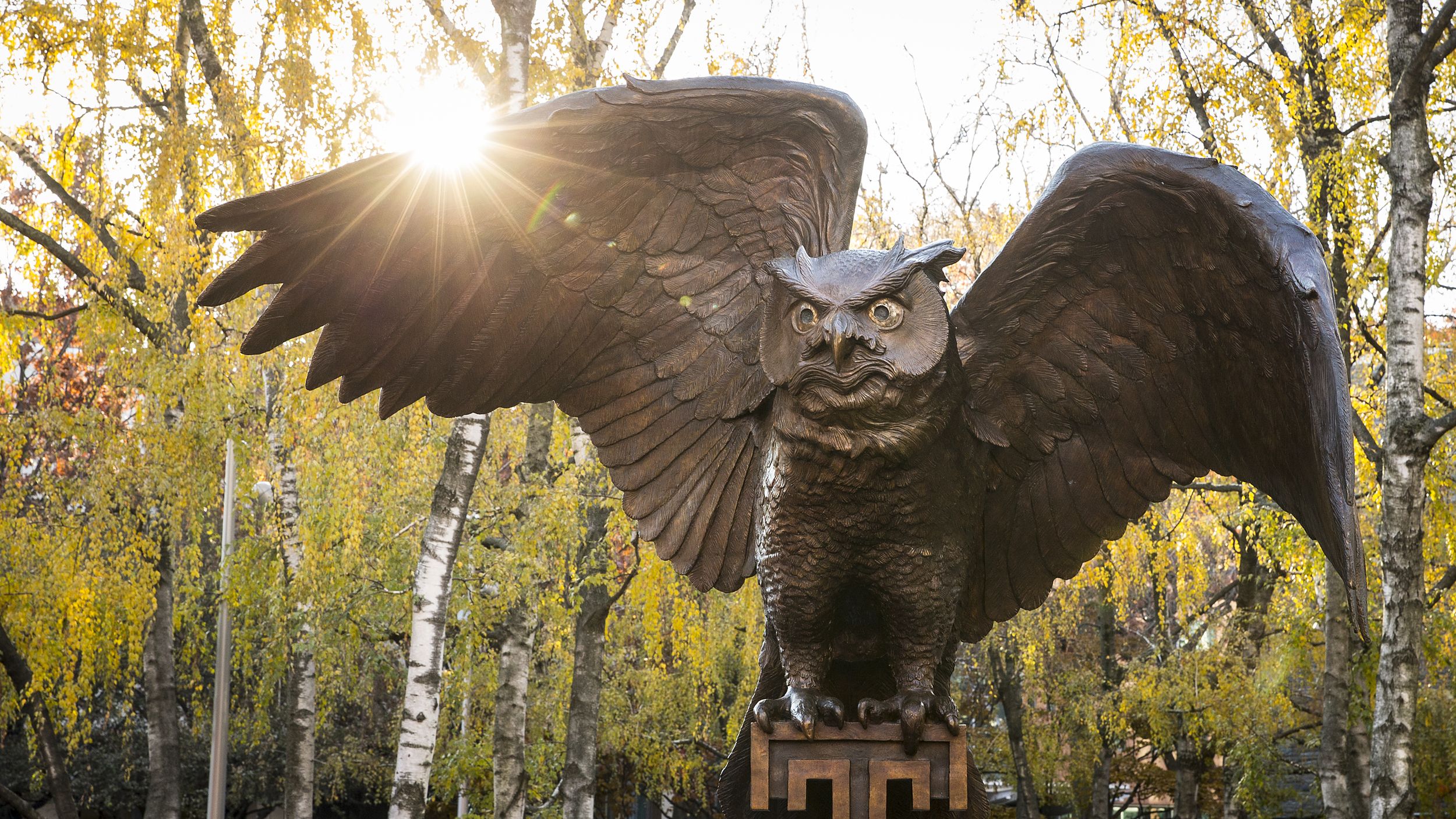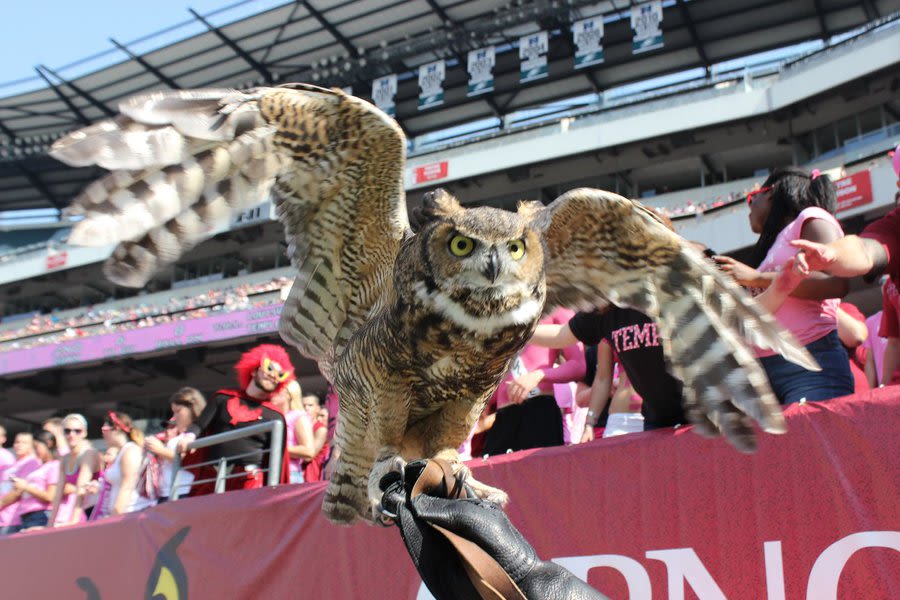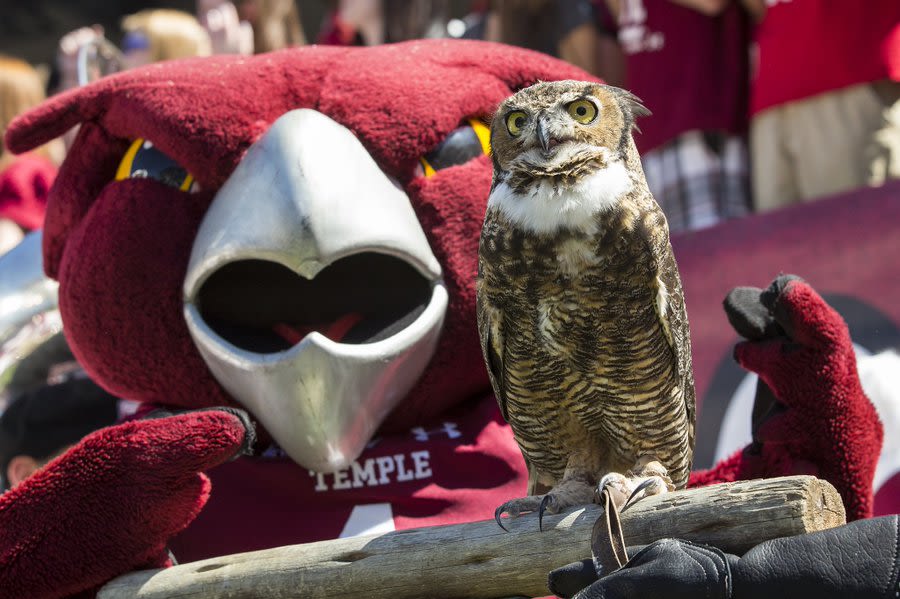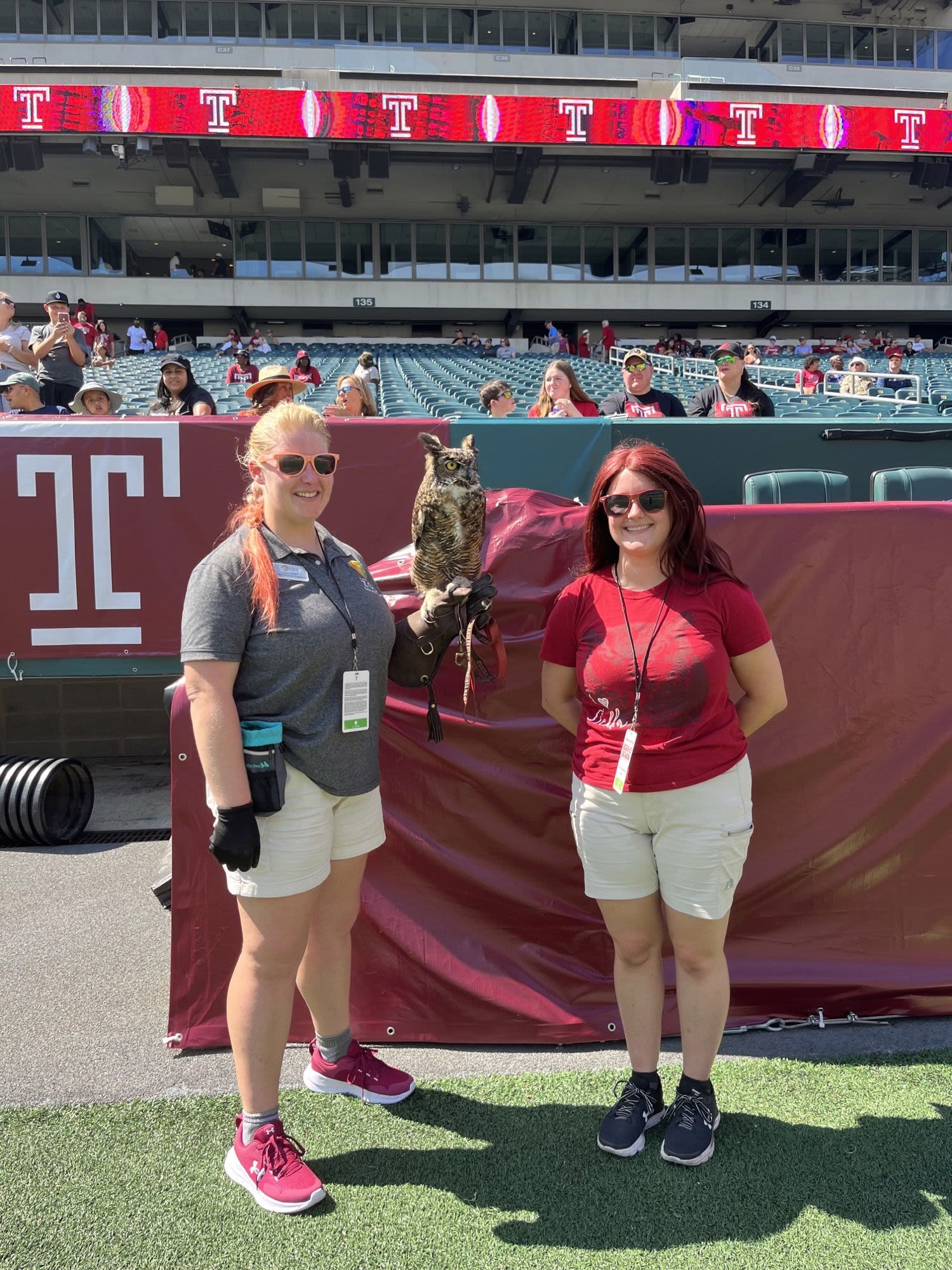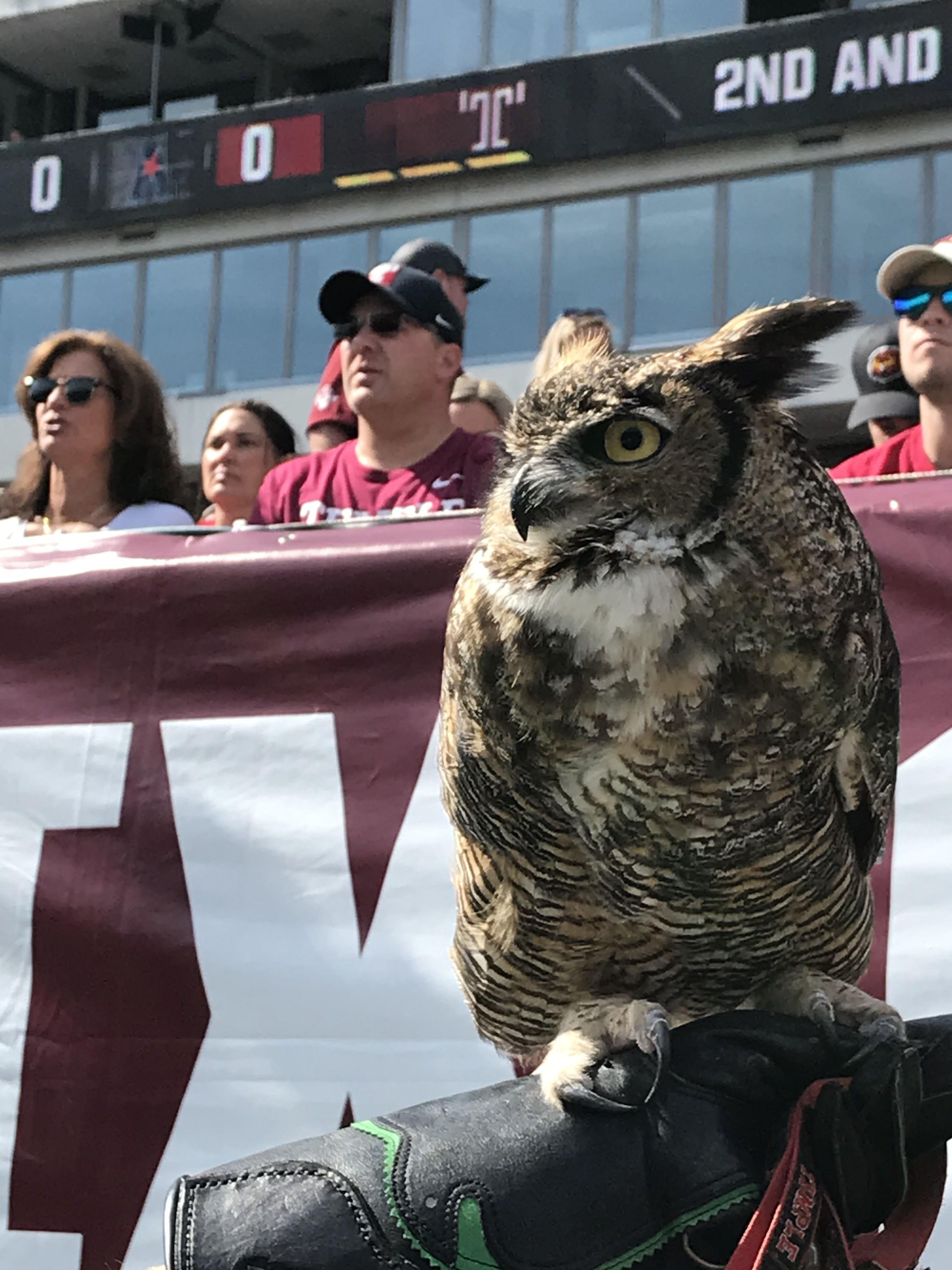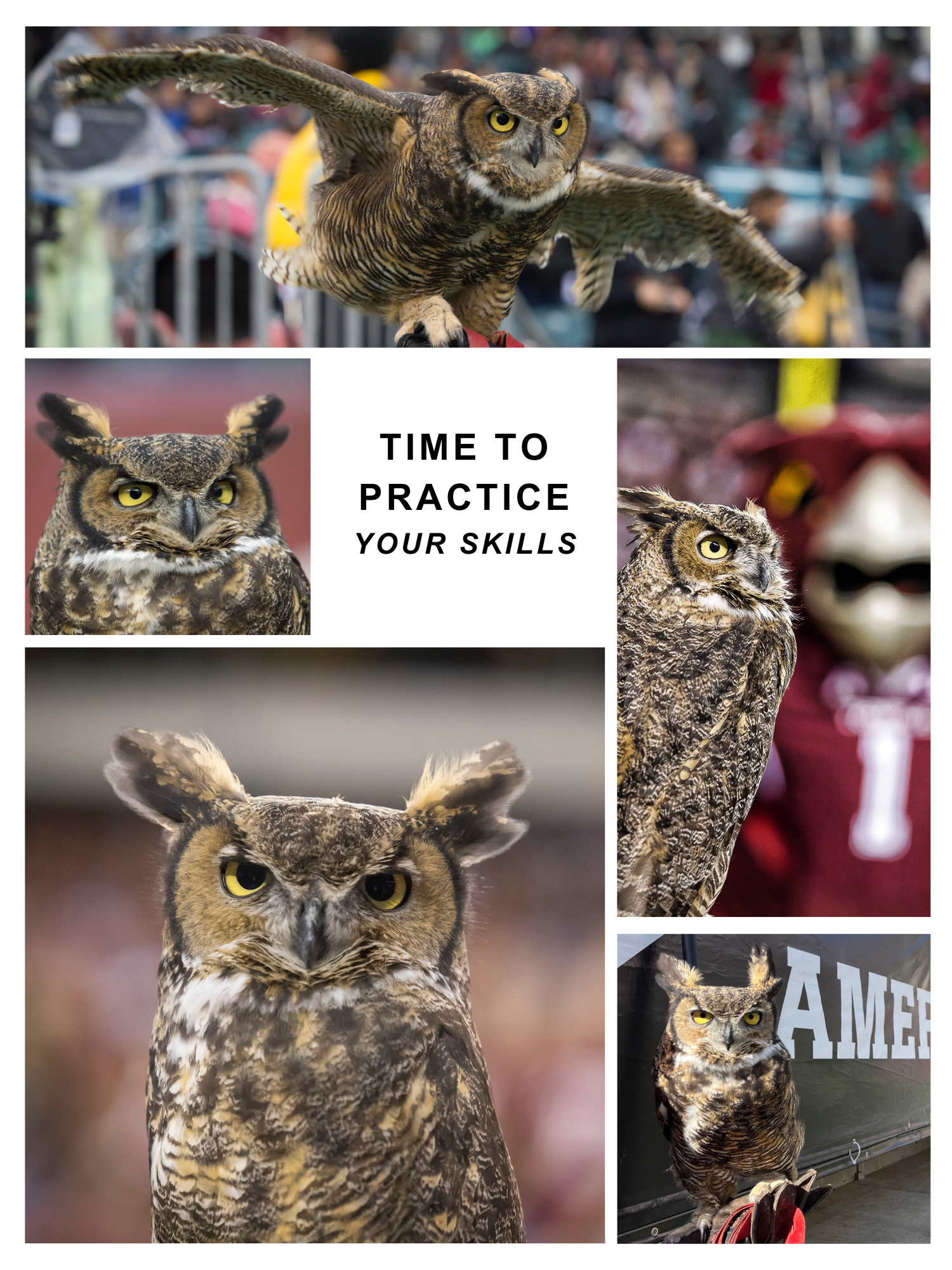Behind the Scenes with Stella
A look into Stella the Owl’s life as an educational animal and beloved Temple mascot!
By Jessica Jewel Tyler
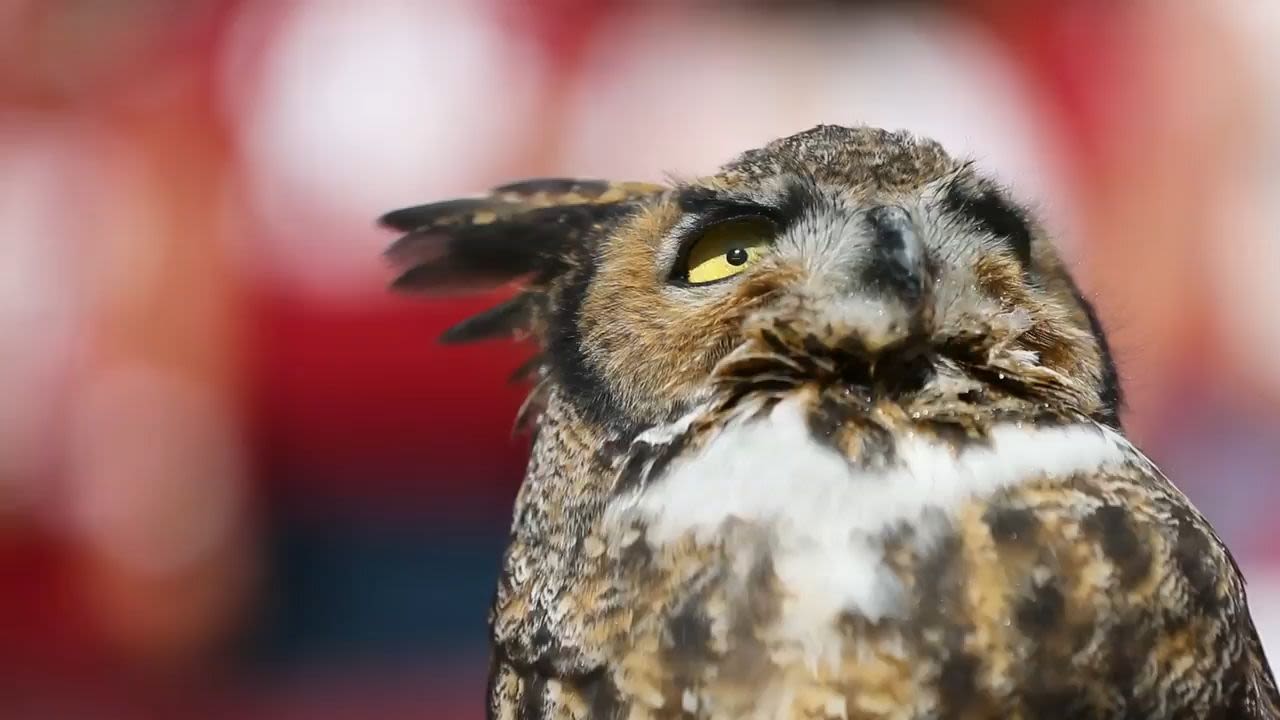
Meet Stella, the Great Horned Owl. She is a cherished member of the Temple community and Elmwood Park Zoo's educational program. Stella has an extraordinary story – she was kept illegally as a pet before being rescued by the zoo, and due to inadequate care, Stella grew to be smaller than other owls of her species. Showing Temple-like grit from the start, she proved a resilient spirit and a fierce devotion to her new purpose as an educator for children (and children at heart) and a mascot who inspires pride in the cherry and white.
As an owl, Stella embodies wisdom, intelligence, and keen observation skills, all traits that represent what it means to be Temple Made. With her strong talons, sharp eyesight, and swift wings, Stella embodies the ideals of determination and success. Whether you see her leading cheers at our sporting games or participating in events like Homecoming, Stella is a constant reminder of strength and resilience that inspires us to fly higher than ever before.
There's a lot that the community doesn't know about Stella, including her remarkable journey to recovery and the special care and training she needs. So, we sat down with her handlers to get the behind-the-scenes info and discover more about this fascinating bird.
About the Great Horned Owl
Great horned owls are one of the largest owl species in Pennsylvania and North America, although Stella is on the smaller side. They are known as the tigers of the sky because they are highly skilled hunters, with unique stripes, which Stella has on her belly. They also have powerful claws that can squeeze around 200 to 300 pounds per square inch.
Their hunting abilities are also aided by their alertness, range of motion, and hearing abilities. Due to their nocturnal nature, people think they're only active at nighttime, but they have a lot of variety in their activity, sleeping lightly to avoid predators and for less than 8 hours at a time. Owls also have a fixed eye position, so they need to rotate their necks to see around them. Though they can't do a full circle, their necks can rotate about 270 degrees because they have about twice as many neck bones as humans. Additionally, if you think the tufts of feathers on their heads are their ears, think again! These tufts are called plumicorns. Their ears are behind the feathers on the side of their necks. Fun fact: their ears are lopsided, so when sound travels towards them, they can quickly figure out its direction.
This amazing species, along with other native owls, are extremely important to human health due to their consumption of small animals, like mice and rats, that could contribute to the spread of diseases. They are one of the best free and natural pest controls in cities. Great horned owls can also live well into their 20s and 30s, especially with human care and protection in zoos.
Stella’s History
Stella originally came to Elmwood Park Zoo from Washington State. At a young age, she was found on the ground and brought into human care. Because she was raised by people, she unfortunately never learned how to survive on her own; with no hunting skills and no natural fear of people, she could not be released into the wild and needed specialized care, which Elmwood Park Zoo now provides. While it may seem tempting, owls and other native wildlife do not make good pets or household companions, and are best left in their natural habitat where they play an important role in a healthy ecosystem!
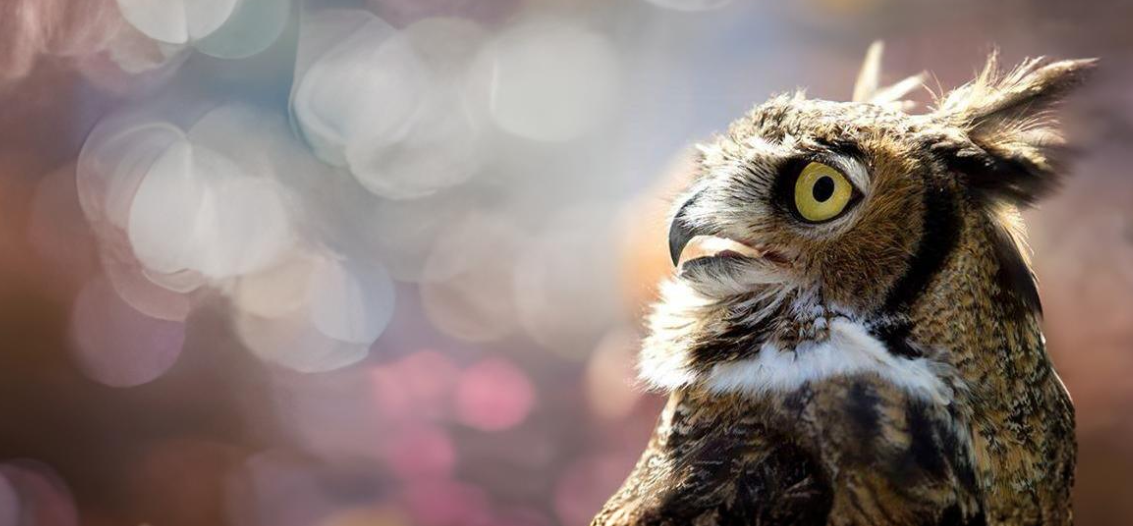
A New Chapter at the Zoo
In 2011, Stella entered her new life as an animal ambassador. As such, she does not live on public exhibit and only comes out for events and programs. In her enclosure, she has access to outdoor and sheltered space, protected by a roof. However, she enjoys being outside all year round, whether soaking in the sun, playing in the snow, or letting her feathers down in the rain.
Stella also enjoys other enrichment activities at the zoo, such as playing seeking games to earn treats and ripping things apart. That’s right, Stella is an expert in destruction. One of her favorite activities for entertainment is tearing up heads of lettuce, newspaper balls or even her perching.
The zoo’s staff ensures that her enclosure is clean with fresh water, and she gets a new perch once or twice a year to keep her feet healthy. Stella's trainers also oversee her daily training and feeding. Although Stella is not expected to learn tricks, she learns behaviors that keep her healthy, mentally and physically stimulated and allow her to earn rewards and snacks. Stella is trained to sit on a scale to be weighed and to sit on a glove to receive yearly vaccines. Having a special bond with her handlers and learning behaviors that ease her care make Stella a special animal.
in October of 2022, the zoo completely renovated the birds-of-prey area, and Stella is now living the life of luxury in a new, much nicer complex-style apartment. She is also neighbors with other ambassador birds, but being fiercely independent, is still able to maintain her privacy.
What’s on the Menu?
Rodents are Stella’s favorite; typically, pieces of mice and rats are the main part of her diet. She may also be offered venison, which is deer meat, and chicks or quail. Generally, she prefers this menu and is not typically excited by anything else.
In the wild, owls have a very specialized diet with a little more variety. They can hunt anything from snakes, frogs, and birds to something as large as a skunk. They are also strict carnivores, so like Stella, they might accidentally eat a leaf here and there, but they don’t try to seek out plant materials.
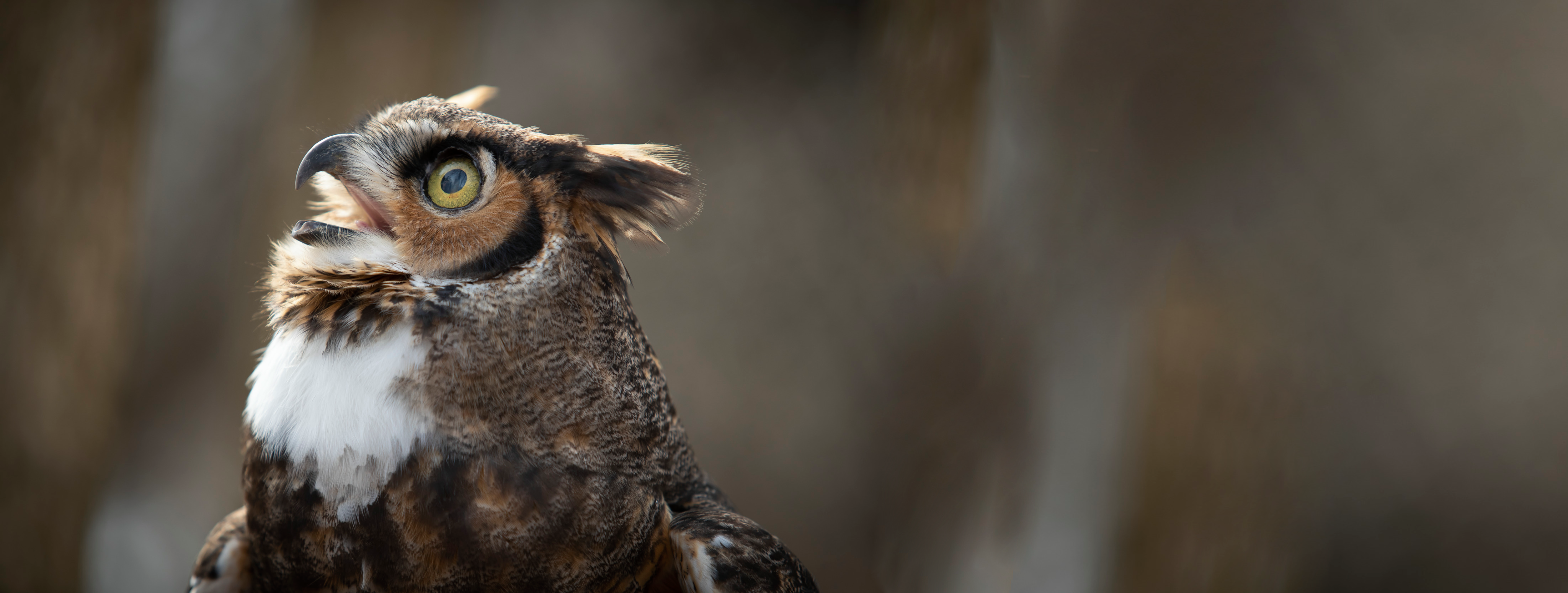
Stella’s Career as an Educational Animal
As mentioned, Stella is part of the ambassador animal group. These animals have the extra special job of meeting with people for educational purposes. In Stella's case, she does zoo programming for school groups and public events and travels to help the zoo teach. Instead of simply hearing about owls, meeting Stella gives people a chance to have a real-life connection. We can always appreciate wild animals from a distance, but meeting them face-to-face has an important, lasting impact. People learn the importance of protecting species like hers in the wild because they are so beneficial to us.
Becoming a Symbol of the Cherry and White
A year or so after Stella moved into the zoo, Temple reached out looking for a live animal mascot. It was serendipitous that Elmwood happened to have a special owl, like Stella, with specific training and personable behaviors. Stella also looked almost exactly like the Temple Owl, and Temple provided an exciting educational opportunity for the zoo.
Stella also makes a perfect live mascot for Temple because her resilience after being taken from her home, battling health issues, and ultimately coming out on top truly embodies the Cherry and White spirit. According to her handlers, “She's extremely determined and sticks up for herself. She also knows her worth because she makes people work for a trusting relationship — but once you have it, she's a great animal to work with.”
Stella is now celebrated on campus and constantly meeting her adoring fans, from alumni and parents to students and staff. She has a reputation for making everyone fall in love with and remember her.
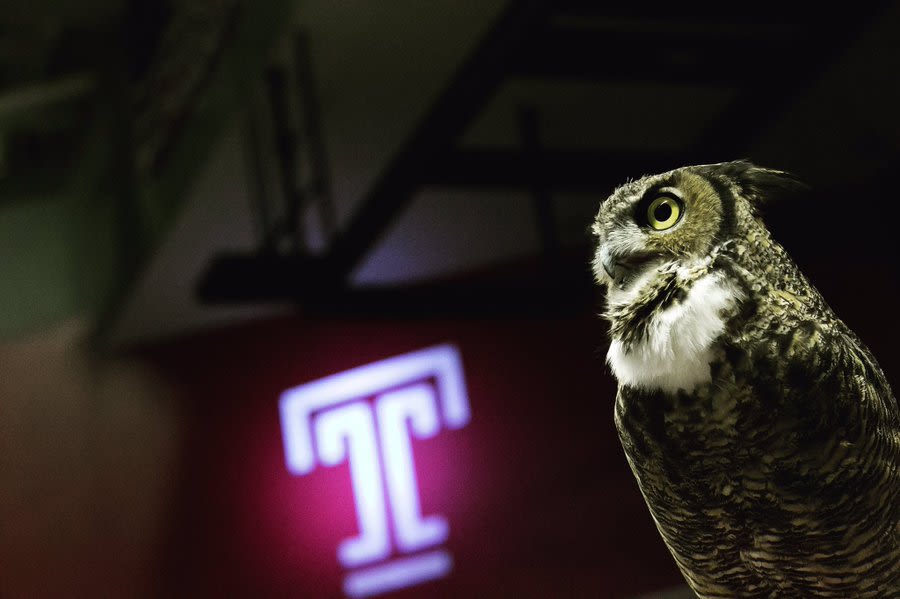
Take Me Out to the Ball Game
Stella seems to enjoy her celebrity status and is often jokingly referred to as a diva. It takes a lot of relationship-building to become Stella’s trainer; she is very particular about who she works with and when. Once you’ve gained that trust, Stella is loyal, well-behaved and happy to come out for special programming. But one of the biggest questions about her is how does she behave so well at sporting events with crowds of people?
Owls are naturally solitary and secretive, but because of her upbringing, she doesn't have a natural fear of humans. In Stella's case, her trainers have also spent a lot of time building positive reinforcement, i.e., rewarding the behavior they want to see. Her trainers also bring lots of snacks to her outings, so if she's a little uncomfortable, they can bring back her focus while trying to remove or change any stressor, if possible. These stressors could be loud noises, other animals, environmental factors etc.
Speaking Stella’s Language
The trainer’s job also includes continuously watching and understanding Stella’s body language. If she is fluffy and calmly looking around, it usually shows that she's comfortable. If she gets tall and skinny or darts her head around, that might mean she's uncomfortable. The trainers can also assess how hard she's gripping the glove, if her plumicorns are up, down or sideways, and her vocalizations. Stella makes a screech or a chirp when she’s content. It’s her way of saying, “hello, I’m here,” and often, it means, “I would like another snack.” On the other hand, clacking and the hooting that we often hear in movies are usually signs of discomfort and territorial claim.
The trainers work hard to understand Stella and her needs, but Stella herself is a rare case of an ambassador animal. She is a perfect fit for the job, and this circumstance is extremely difficult to replicate.
Behind the Feathers
What is it like to work with Stella? What is her personality like? Does she answer to her name? These are some of the questions we often get. She may respond to certain people's voices, tones and combinations of sounds, but she earned her diva status and is known for ignoring her name when people want her to look at them or their camera. Owls are not pets, so don’t expect them to be cuddly or overly friendly necessarily, but in Stella’s case, she is personable enough to be good at her job.
Her trainers try not to anthropomorphize her too much, but her personality has started to shine through as she's gotten more choice in her daily life. For instance, the trainer used to lean into the enclosure to get Stella. If she did not step up onto the glove, they would return later or try a different approach. Now there are shift doors installed, so instead of coming to her, Stella must come out of her door before stepping up. Interestingly, Stella is more willing to come out now that it’s strictly her choice.
Her trainers have noticed a curious side of Stella emerging now that she has gained more trust and autonomy. When Stella sees something new and exciting, she does a head bobble and other exaggerated body movements. When the trainers figure out what she’s gesturing for, Stella’s usually brave enough to explore the new item and she’s a quick enough learner to immediately figure out if she can eat it, jump on it, or play with it.
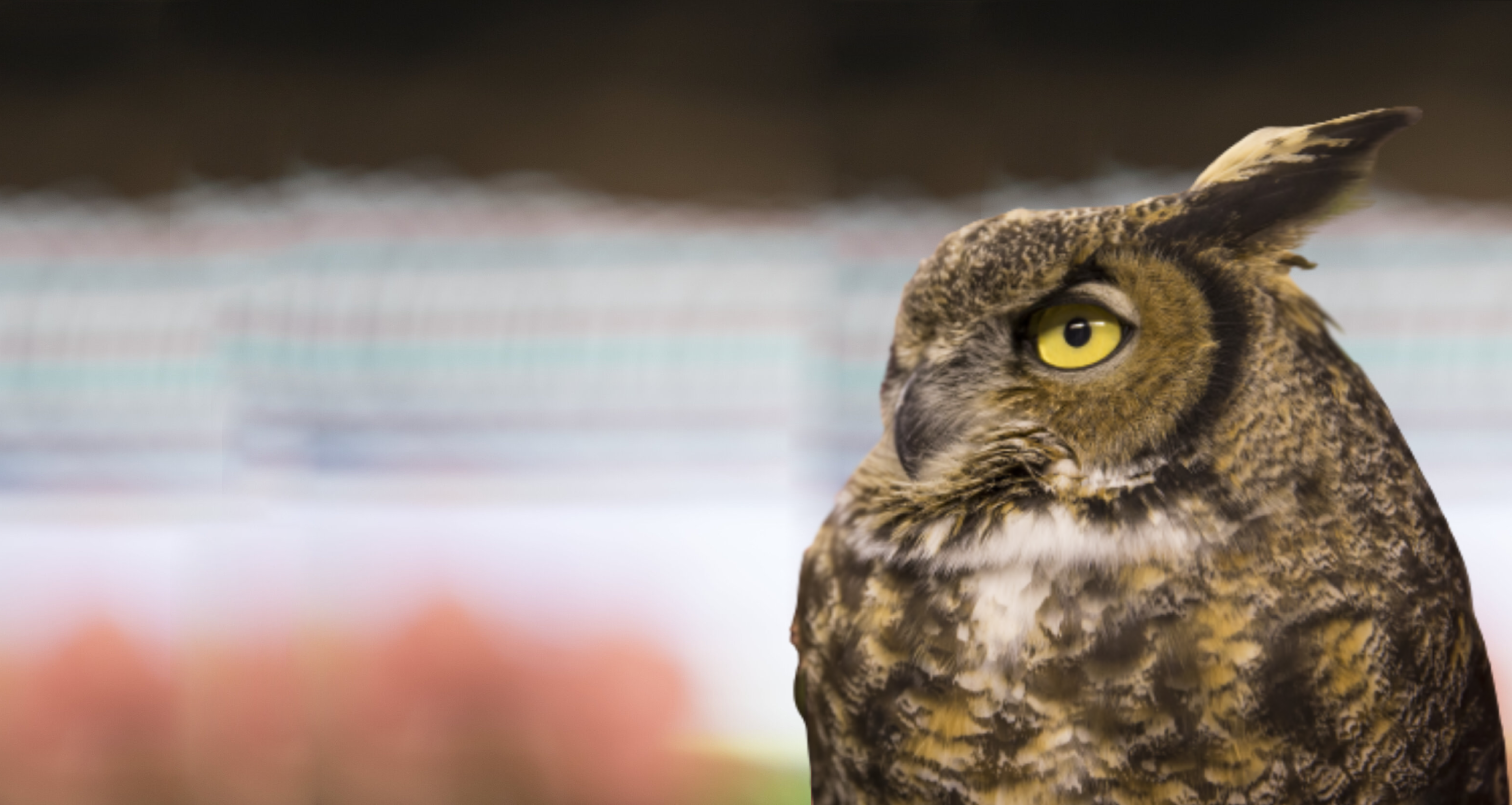
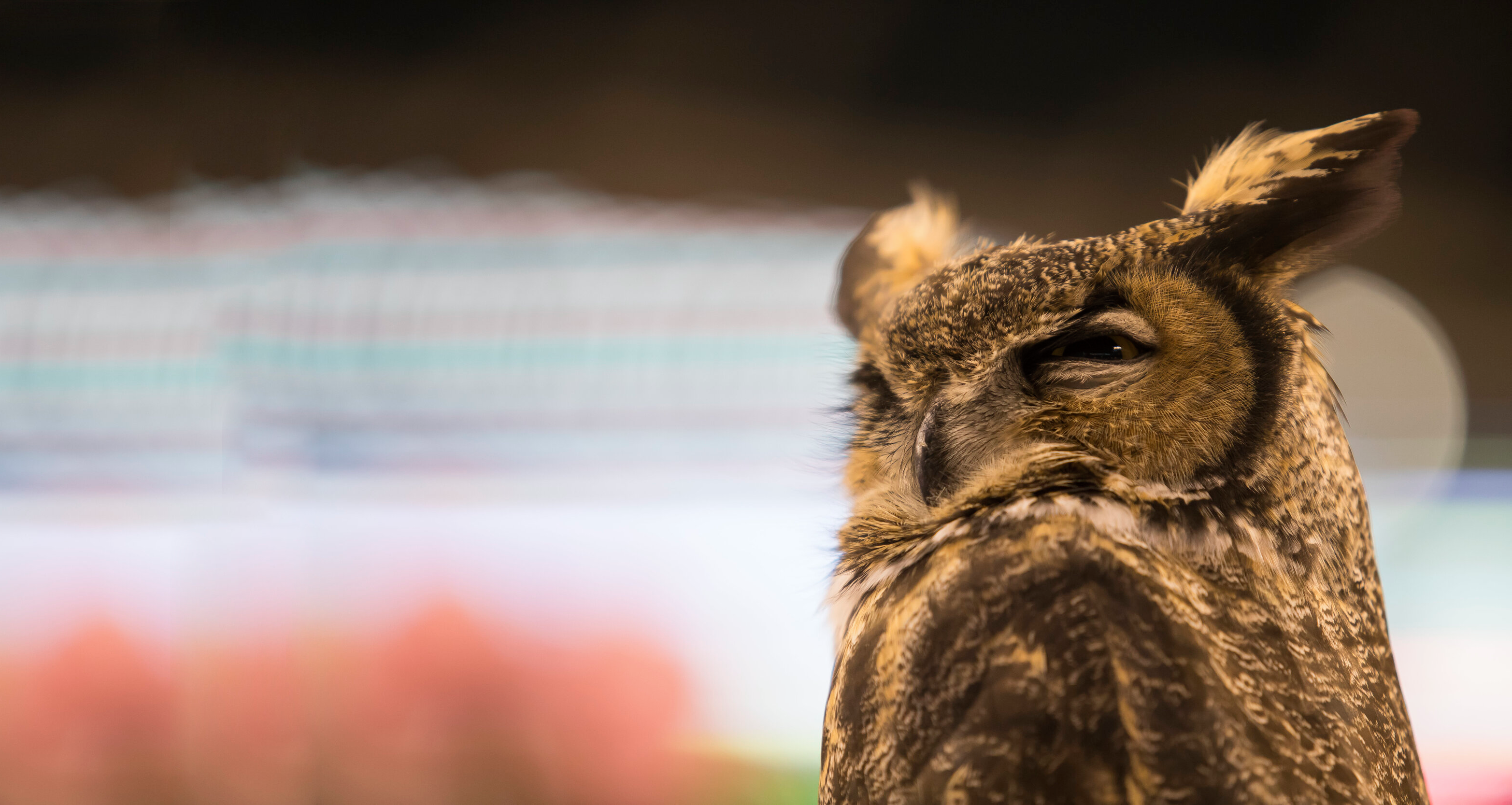
In the Star’s Dressing Room
Like many humans, Stella also enjoys her alone time, and most owls are not social and do not live in groups. However, when owls mate in the wild, they do so for life and return to the same nest year after year only during the breeding period. Stella has neighbor birds she can see and hear on either side, but she has her own private space and seems to prefer that.
Stella has lived with humans her whole life, so she's not as nocturnal as some other owls would be. Her sleep schedule depends on what her job entails that day. In the mornings and afternoons, she’ll anticipate her trainers coming to get her ready to give her treats, so she's awake and excited. After eating and finishing her programs, she tends to be quieter, nap, and relax for the rest of the day. What Stella does at night when the zoo is closed is a mystery, but sometimes she can be heard hooting back and forth with other wild owls.
Thank you to Stella, Laura Soder and Elmwood Park Zoo for being a part of the Temple community.

